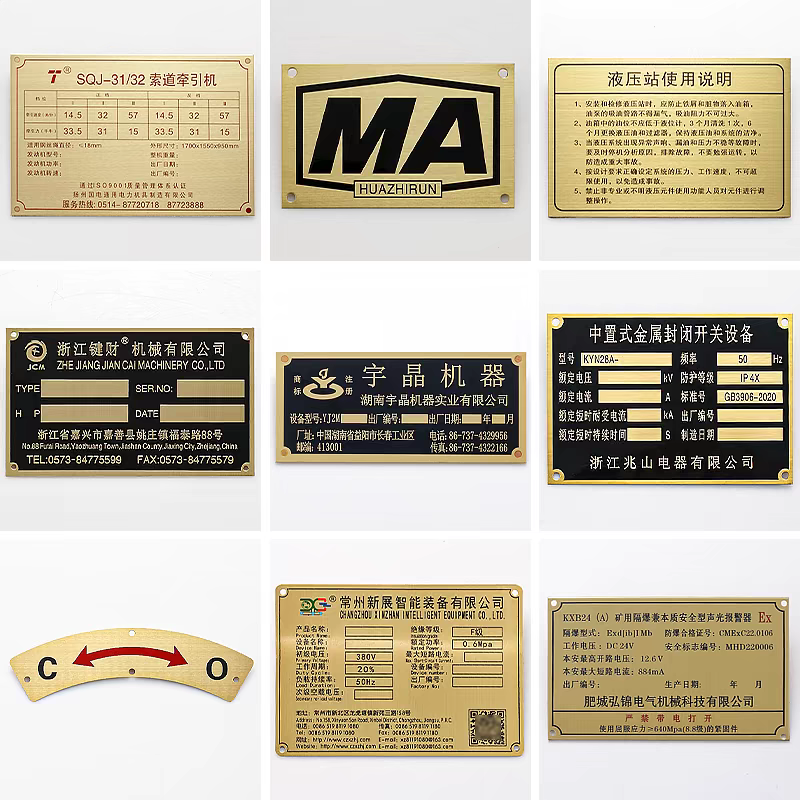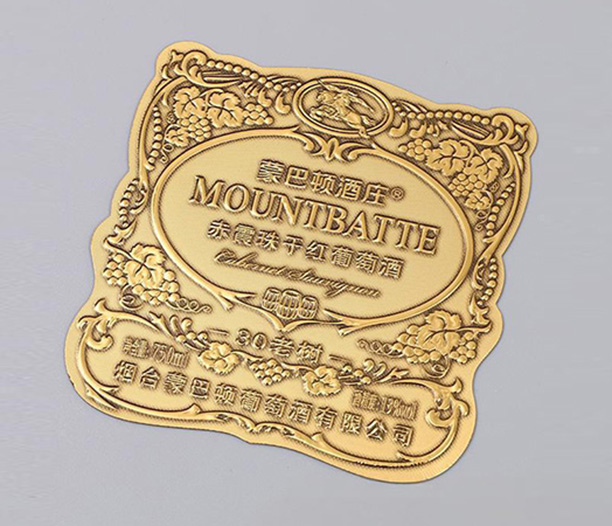In the complex world of industrial operations, facilities management, IT infrastructure, and beyond, keeping track of assets is paramount. Equipment identification labels are the unsung heroes of this critical task. Far more than simple stickers or tags, these specialized identifiers are fundamental tools for safety, efficiency, compliance, and cost control. This comprehensive guide dives deep into the world of equipment identification labels, exploring ten essential aspects every organization should understand.

1. Understanding the Core Purposes: Why Equipment Identification Labels are Non-Negotiable
Equipment identification labels serve multiple, often overlapping, vital functions within an organization:
Safety First: Perhaps the most critical role. Labels clearly warn of hazards (high voltage, moving parts, crushing risks, chemical exposures, hot surfaces), indicate lockout/tagout (LOTO) points, specify personal protective equipment (PPE) requirements, and provide emergency shutdown instructions. Clear identification prevents accidents and injuries.
Operational Compliance: Numerous regulations (OSHA, ISO, FDA, GMP, environmental agencies) mandate specific labeling on equipment. This includes safety warnings, pressure ratings, electrical specifications, material contents, and maintenance records. Proper equipment identification labels are essential for passing audits and avoiding costly fines.
Maintenance & Reliability: Efficient maintenance hinges on quickly locating the correct asset. Labels provide unique asset IDs linked to maintenance histories, schedules, and parts lists in CMMS (Computerized Maintenance Management Systems). This enables proactive maintenance, reduces downtime, and extends equipment lifespan.
Inventory & Asset Management: Knowing what you have, where it is, and its condition is fundamental. Equipment identification labels with unique asset numbers or barcodes are the cornerstone of accurate inventory tracking, lifecycle management, depreciation calculations, and financial reporting.
Theft Deterrence & Recovery: Permanent, tamper-evident asset tags make stolen equipment harder to sell and easier to identify if recovered, acting as a deterrent. Unique IDs link equipment to ownership records.
Traceability & Recall Management: In manufacturing and processing, labels track equipment usage history, calibration status, and cleaning cycles. This is crucial for product quality control and executing targeted recalls if necessary.
Efficiency & Training: Quickly identifying equipment reduces time spent searching, streamlines workflows, and aids in training new personnel on specific machinery locations and functions.
2. Exploring the Diverse Types of Equipment Identification Labels
Not all labels are created equal. The right type depends entirely on the application, environment, and required durability:
Asset Tags: Typically metal (aluminum, stainless steel, brass) or rigid plastic, often with pre-printed or laser-marked unique sequential numbers or barcodes. Designed for permanent identification of capital assets. May incorporate tamper-evident features.
Safety Labels: Focus on hazard communication. Use standardized symbols (pictograms), signal words (DANGER, WARNING, CAUTION), and clear text messages. Often made from durable vinyl or polyester with aggressive adhesives and protective overlaminates to withstand environments and remain legible. Must comply with ANSI Z535.4/ISO 3864 standards.
Electrical Labels: Specifically for electrical panels, disconnects, transformers, and components. Include voltage, current, phase, arc flash warnings, and panel directories. Often use specific colors and durable materials resistant to heat, chemicals, and moisture. Mandated by NFPA 70E (NEC).
Pipe & Valve Markers: Identify pipe contents (e.g., Steam, Chilled Water, Natural Gas, Corrosive Chemical) and flow direction. Use color-coding (ANSI/ASME A13.1 standard) and text. Made from materials like rigid plastic, vinyl, or metal to withstand the specific pipe environment (temperature, chemicals).
Barcode/QR Code Labels: Enable rapid data capture using scanners or mobile devices. Link physical assets directly to digital records in asset management or CMMS software. Can be printed on various durable label materials.
Metallized Polyester Labels (UL/CSA Recognized): Required for identifying components within UL or CSA-listed electrical equipment. Feature specific markings and tracking information, printed on durable, flame-retardant polyester.
Heat-Resistant Labels: Made from materials like polyimide (Kapton) or ceramic-filled materials to withstand extreme temperatures encountered in ovens, engines, boilers, and sterilization processes.
Chemical-Resistant Labels: Utilize specialized materials (e.g., certain polyesters, vinyls, or Teflon) and adhesives designed to resist degradation from harsh solvents, oils, acids, and alkalis common in labs, manufacturing, and chemical processing.
Tool & Calibration Tags: Used on precision instruments and tools to indicate calibration due dates, certification status, and unique ID numbers. Often made from durable paper, polyester, or metal.

3. Material Science & Durability: Choosing Labels That Last
The environment dictates the material. Selecting the wrong material leads to failed labels, lost information, and potential hazards. Key considerations:
Surface: Metal, plastic, painted surfaces, powder coating, glass, textured surfaces? Adhesion varies significantly. Some materials require specific primers for long-term bonding.
Exposure:
Temperature: Will labels face extreme heat (engines, ovens) or cold (freezers, outdoor winter)? Polyimide and ceramic labels handle high heat; specialized flexible vinyls handle deep cold.
Chemicals/Oils: Labs, workshops, manufacturing floors? Polyester, vinyl with specific coatings, or Teflon offer resistance. Test compatibility.
UV/Sunlight: Outdoor equipment? Polyester and certain vinyls with UV-resistant inks and laminates prevent fading and degradation.
Abrasion: High-traffic areas or equipment subject to scraping? Thick polyester, polycarbonate, or metal labels with protective overlaminates are essential.
Moisture/Water Immersion: Washdown areas (food processing, pharma), outdoor use, marine environments? Require waterproof materials (polyester, vinyl) and adhesives, often with edge seals or lamination.
Solvents: Cleaning agents, degreasers? Require highly chemical-resistant materials like polyester or Teflon.
Expected Lifespan: Temporary tracking vs. permanent asset ID? Match material durability to the required service life.
Common Materials:
Vinyl: Economical, flexible, good general durability (weather, mild chemicals). Widely used for safety labels, pipe markers, asset tags. Various grades available.
Polyester (PET): Superior durability – excellent resistance to chemicals, abrasion, moisture, tearing, and higher temperatures. Common for asset tags, barcode labels, safety labels, UL labels.
Polyimide (Kapton): Exceptional high-temperature resistance (often exceeding 500°F/260°C continuously). Used in electronics, aerospace, engine compartments.
Metal (Aluminum, Stainless Steel, Brass): Maximum durability, permanence, and tamper resistance. Ideal for harsh environments, permanent asset ID, security tags. Can be etched, stamped, or printed.
Polycarbonate: Very rigid, impact and abrasion-resistant, good chemical resistance. Often used for nameplates on heavy machinery.
Tamper-Evident Materials: Feature destructible vinyl, frangible paper, or special adhesives that leave visible residue or text (e.g., "VOID") if removal is attempted.
4. Best Practices for Implementing Equipment Identification Labels Effectively
Simply slapping on a label isn't enough. Effective implementation requires planning and strategy:
Develop a Labeling Standard: Create a documented policy outlining:
What gets labeled (e.g., all assets over $X value, all safety-critical equipment).
Information required on each label type (e.g., Asset ID, Name, Location, Barcode, Safety warnings).
Label types, materials, and sizes for different applications/environments.
Placement guidelines (visible, accessible, durable surface).
Data format standards (e.g., asset numbering convention, barcode symbology).
Responsibility for application and maintenance.
Plan for Integration: Ensure equipment identification labels integrate seamlessly with your Asset Management System (AMS) or CMMS. The unique IDs on the labels must correspond exactly to records in the software.
Prioritize Label Design for Readability & Durability:
Clarity: Use clear fonts, appropriate text size, high-contrast colors (black on yellow, white on red), and standardized symbols.
Conciseness: Include essential information only. Avoid clutter.
Durability by Design: Choose materials and protective overlaminates suitable for the specific environment. Consider encapsulation for extreme conditions. Ensure adhesive is rated for the surface and environment.
Strategic Placement:
Place labels where they are easily visible during normal operation and maintenance, without requiring disassembly.
Avoid high-wear areas, moving parts, hinges, or surfaces subjected to direct heat/cold/chemical spray unless using a specifically designed label.
Ensure placement doesn't obscure other critical information or safety warnings.
Clean and prepare surfaces meticulously before application (remove dirt, oil, grease, rust).
Data Accuracy is Paramount: Implement robust processes to ensure the data printed on the label (especially unique IDs) is 100% accurate and perfectly matches the digital record. Garbage in = Garbage out.
Regular Inspection & Maintenance: Include label condition checks in routine maintenance rounds. Replace damaged, faded, peeling, or illegible equipment identification labels immediately. Update labels if equipment information changes significantly.
5. Quantifying the Tangible Benefits & ROI of Equipment Identification Labels
Investing in a robust equipment identification label system delivers measurable returns:
Enhanced Safety & Reduced Liability: Clear hazard communication prevents accidents, protecting personnel and reducing workers' compensation claims and potential lawsuits. Compliance avoids regulatory fines.
Minimized Equipment Downtime: Faster equipment identification streamlines troubleshooting and maintenance. Access to maintenance history via asset ID enables faster repairs and proactive maintenance, maximizing uptime.
Optimized Maintenance Costs: Efficient scheduling, accurate parts ordering (linked via asset ID), and extended equipment life through proper care directly reduce maintenance expenditures. Preventing catastrophic failure is far cheaper than repair.
Improved Operational Efficiency: Reduced time searching for equipment, faster audits, streamlined inventory counts (using barcode scanners), and accurate asset location data all contribute to smoother, faster operations.
Accurate Financial Management & Reporting: Reliable asset data underpins accurate depreciation calculations, insurance valuations, tax reporting, and capital budgeting decisions.
Effective Theft Deterrence & Asset Recovery: Tamper-evident tags deter theft, and unique IDs aid police in identifying and returning stolen property.
Streamlined Audits & Compliance: Easily demonstrate compliance with safety, environmental, and quality regulations during audits by presenting well-labeled equipment and traceable records.
Knowledge Preservation: Labels preserve critical information (model, serial number, specs) even as personnel change roles or leave the company.
Improved Traceability & Quality Control: Essential for regulated industries, ensuring equipment used in production meets standards and enabling targeted recalls if needed.
Beyond the Basics: Ensuring Long-Term Success
Implementing equipment identification labels is not a one-time project; it's an ongoing process. Success hinges on:
Leadership Buy-in: Securing commitment and resources from management.
Employee Training: Ensuring all relevant staff understand the labeling standard, the importance of labels, and how to use them (e.g., scanning barcodes, reporting damaged labels).
Leveraging Technology: Utilizing mobile barcode/QR scanners integrated with CMMS/AMS software maximizes the value of the labels, enabling real-time data capture and updates.
Continuous Improvement: Regularly review the labeling standard and implementation effectiveness. Adapt to changes in equipment, regulations, or business processes.
Equipment identification labels are far more than simple markers; they are fundamental infrastructure for safe, efficient, compliant, and well-managed operations across virtually every industry. From preventing catastrophic accidents to optimizing maintenance schedules, from ensuring regulatory compliance to protecting valuable assets, the humble label plays an indispensable role. Understanding the diverse purposes, types, materials, best practices, and significant benefits outlined in these ten essential points empowers organizations to select, implement, and maintain an effective labeling system. Investing wisely in high-quality, durable, and strategically applied equipment identification labels delivers a compelling return on investment by safeguarding people, maximizing equipment performance, reducing costs, and ensuring operational excellence. They are the silent, yet critical, workhorses of asset visibility and control.





